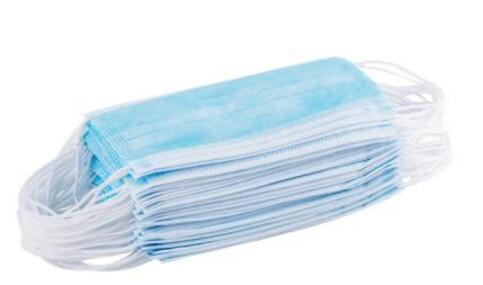How to choose a medical mask?
At present, medical masks are classified according to different purposes, and the applicability of each type is different. When choosing, don’t look at the better ones, look at the ones that are more suitable.
Ordinary degreased gauze mask: compliantGB19084-2003 stipulates that the length of the mask shall not be less than 18cm, the width shall not be less than 14cm, and the number of layers shall not be less than 12. The warp yarn shall not be less than 9 per centimeter, and the weft yarn shall not be less than 9 per centimeter. The mask shall be non-toxic and odorless. Protective equipment that protects the respiratory tract from harmful dust, aerosols, microorganisms, and dust.
Ordinary medical masks: comply with relevant registered product standards (YZB), generally lacking filtration efficiency requirements for particles and bacteria, or requiring lower filtration efficiency for particles and bacteria than medical surgical masks and medical protective masks. Suitable for general protection of medical staff.
Medical surgical mask: compliant with YY0469-2004 "Technical Requirements for Medical Surgical Masks" refers to masks worn by medical staff during invasive procedures that can prevent the spread of blood, body fluids, and splashes. Important technical indicators include filtration efficiency, bacterial filtration efficiency, and respiratory resistance:
1. Filtering efficiency: Under the condition of air flow rate (30 ± 2) L/min, the aerodynamic median diameter is (0.24 ± 0.06) μ The filtration efficiency of sodium chloride aerosol shall not be less than 30%;
2. Bacterial filtration efficiency: Under specified conditions, for an average particle diameter of (3 ± 0.3) μ The filtration efficiency of m’s Staphylococcus aureus aerosol is not less than 95%;
3. Respiratory resistance: Under filtration efficiency flow conditions, the inhalation resistance does not exceed 49Pa and the exhalation resistance does not exceed 29.4Pa.
Medical protective masks: comply with GB19083-2003 Technical Requirements for Medical Protective Masks, with a diameter of ≤ 5 that can prevent airborne transmission μ Infection factors or close range(< 1m) A mask that has contracted infection due to contact with diseases transmitted by droplets. Important technical indicators include non oily particle filtration efficiency and airflow resistance:
1. Filtering efficiency: Under the condition of air flow rate (85 ± 2) L/min, the aerodynamic median diameter is (0.24 ± 0.06) μ The filtration efficiency of sodium chloride aerosol is not less than 95%, which meets the grade of N95 (or FFP2) and above.
2. Inhalation resistance: Under the above flow conditions, the inhalation resistance shall not exceed 343.2Pa (35mmH ² 2O).
N95 mask: Made of high-efficiency electrostatic filter cotton and melt blown non-woven fabric material, it effectively filters non oily particles with a filtration rate of over 95%. Used to provide respiratory protection.
Fine particulate matter (PM2.5) filter mask: Its main improvement lies in the design of filter membranes and materials to enhance the effectiveness of filtering PM2.5, such as the refinement of spinning materials and the formation of fine pores, which can effectively block fine particulate matter. At the same time, other novel methods have emerged, such as the use of electrical, magnetic, and chemical methods to adsorb its sedimentation or stay away from respiratory channels.






